Summertime means days at the lake, spending time on the boat, hanging out at the beach, swimming in the pool, and being in and around WATER a lot! And anytime children are around water, safety is our number one concern. Life jackets help keep kids safe when spending time on the water. But, with so many options, brands, and types of life jackets and personal floatation devices out there, how do you know which ones are the best for kids? Today, Meghan Garriott, Illinois photographer and mom of three, is here to help you find the best life jackets for kids. She’ll go over proper life jacket fit, how to choose a life jacket based on your activity, and includes recommendations for the best life jackets for kids.
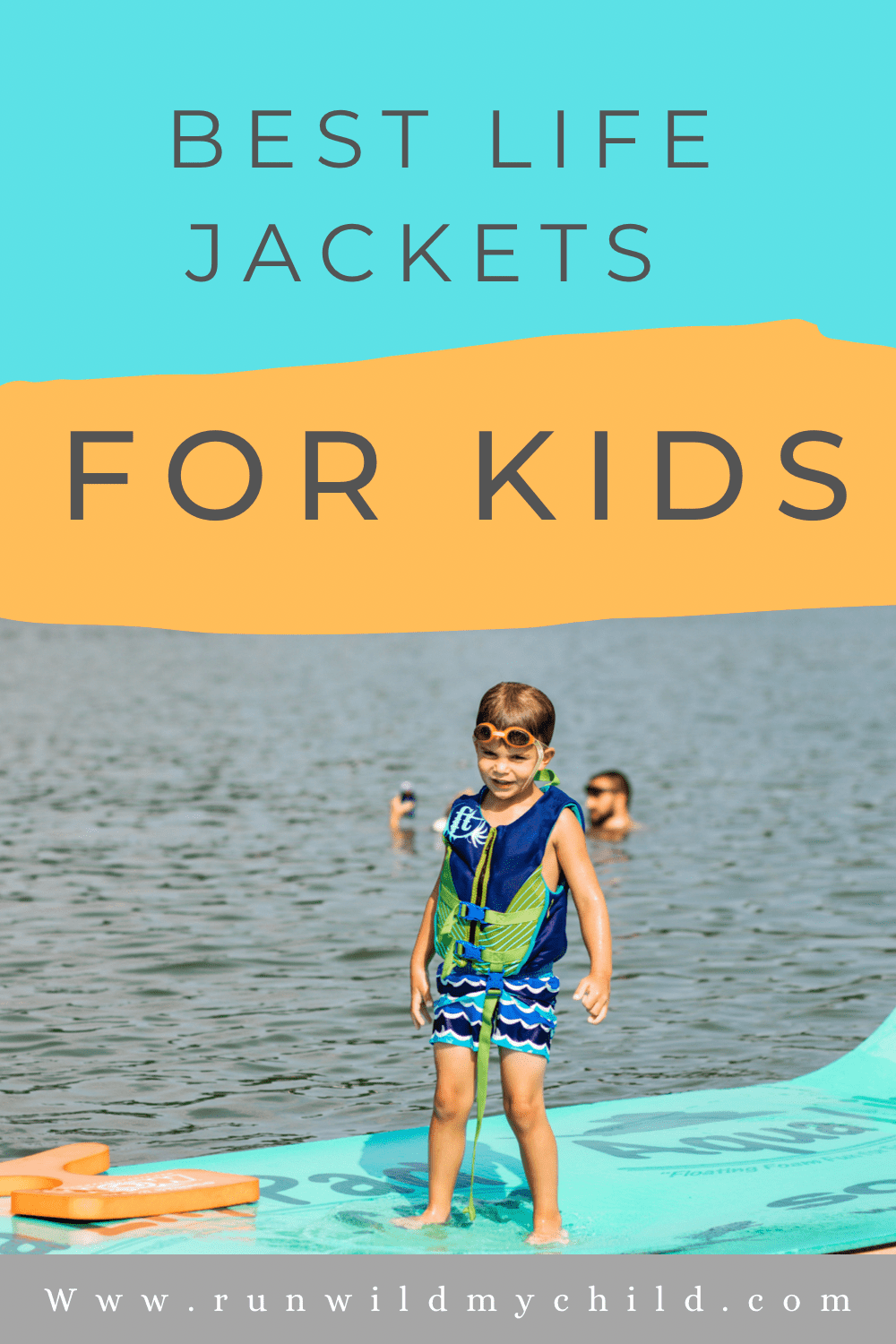
Our recommendations for the best life jackets for kids
All our analysis, safety features, and full product reviews are below, but if you’re ready for us to get to the point right NOW, here are our recommendations for the best life jackets for kids:
-
Best overall life jacket for babies – STEARNS Puddle Jumper Hydroprene Infant Life Jacket
- Best life jacket for chunky babies – O’Neill Wake Waterski USCG Infant Life Vest
- Best life jacket for kids – Full Throttle Rapid Dry Neoprene Life Jacket (33-55lbs) and Full Throttle Rapid Dry Youth Life Jacket (55-88lbs)
- Best life jacket for kids that hate wearing life jackets – Puddle Jumper 2-in-1 Life Jacket and Rash-guard
- Best fashionable life jacket – Body Glove Paddle Pals 33-55lbs
-
Best life jacket for water sports – O’Neill Child Reactor Life Vest (30-50lbs) or O’Neill Youth Reactor Life Vest (50-90lbs), or O’Neill Teen Reactor Life Vest (75-125lbs)
Safety always comes first
There are so many fun water activities that are great for your health, but no matter what you’re doing, when water is involved, safety precautions must be taken. Water wings, floaties, and other blow-up toys and floatation aids are fun (and often very affordable and easy), but they are not life-saving devices in emergency situations. According to the American Academy of Pediatrics, drowning is the number one cause of unintentional death for children ages 1 to 4.
The good news is drowning is preventable with constant supervision and a reliable personal flotation device, like a life jacket. However, not every life jacket is made for every situation. Shopping for a life jacket can be overwhelming. But don’t worry; we’re here to help! We’ve got the best kids life jacket recommendations for your little swimmer.
*It’s important to note that children should still be constantly supervised when in or around water, even with life jackets on.
Life jackets are a summer staple
Life jackets are a quintessential part of our summer wardrobe. Lake days are our favorite family activity in the summer and safety is our utmost priority. I think it’s safe to say most families find themselves in or around water sometime during the summer. Water is fun for the whole family, but it can often be stressful for parents trying to find the right gear to keep kids safe AND comfortable.
Whether you are in the pool swimming, on the lake fishing, on the beach playing, or behind a boat riding a wake, life jackets for kids must be a part of the fun. But in order for it to be fun, the life jackets need to be comfortable and safe. We are here to help you find the right life jacket for kids, no matter what the age of your kids or the situation, so everyone can safely enjoy the water.
If you are looking for fun ways to get in the water, check out these 15 kid-friendly ways to get active on the water.
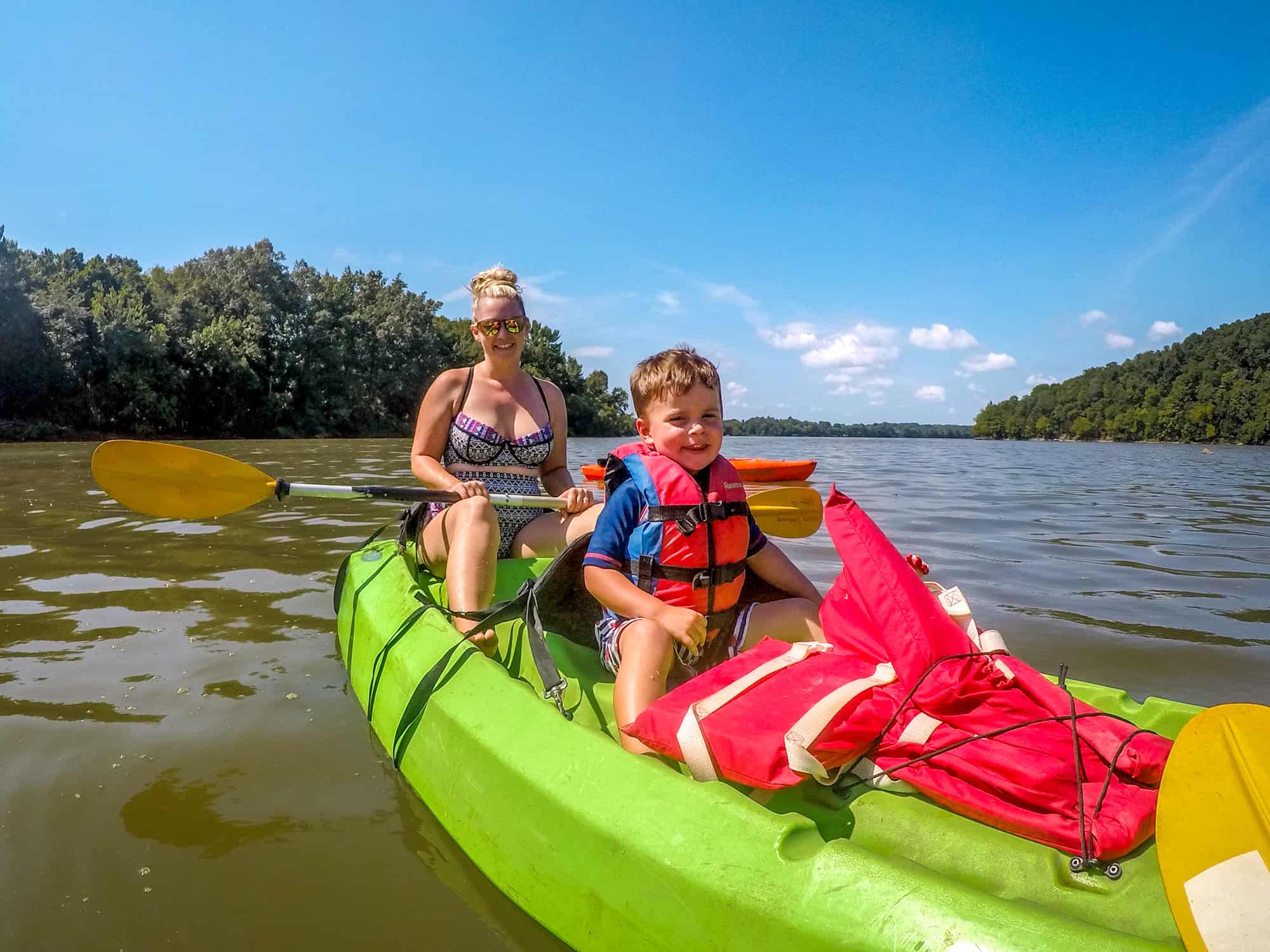
What to look for in a kids’ life jacket
When trying to decide on a life jacket for kids, there are a lot of factors to consider. Here are a few factors that will affect the type of life jacket you need:
- Where will your child be wearing a life jacket? Pool, lake, or ocean?
- Will they be doing a lot of swimming or just hanging out on the boat/beach? There are different types of life jackets for different activities.
- What material does your child prefer? Life jackets are made of nylon, neoprene, or vinyl. My kids prefer neoprene as it is softer and does not cause chafing after a long day of swimming, but it can be more expensive.
- What is the size and body type of the child wearing it? Life jackets Are usually sized by weight, but the ranges can vary by brand. Always check the sizes and be sure that your child fits the size parameters for the life jacket at the time they’re wearing it.
Another variable to consider is the color of the life jacket. I try to look for brands of life jackets with bright neon colors that will contrast against both a pool and the lake. Neon colors help to increase supervision and safety.
When does your child need to wear a life jacket?
It is important to know when your child should be wearing a life jacket. If you are planning a trip to a lake or river, be sure to check that area’s rules and regulations. As a general rule for lakes and rivers, children should ALWAYS have their life jackets on when under 12 years old, even if your child is a capable and confident swimmer. This applies whether your child is in a canoe, kayak, or a boat under 16 feet in length.
In many places, boating laws require lifejackets to be US Coast Guard-approved (see below for more info on that). If you are renting a boat, make sure to ask if they provide baby or child-sized life jackets or if you’ll need to bring your own. Before going to a pool, check to make sure lifejackets are allowed and if they also need to be Coast Guard approved.
Coast Guard-approved life jackets
If/when the U.S. Coast Guard stops you on the water to do a safety check, they will almost always check whether you have the right life jackets onboard. Not all life vests or flotation devices are approved USCG life jacket types. If you need a USCG-approved life jacket, be sure to check the label for all pertinent information before buying a life vest. The label of all US Coast Guard-approved life jackets contains a statement that it is approved, with an approval number.
There are 5 categories of United States Coast Guard life jacket types, which will be labeled Type I through IV. Most of the life jackets we cover in this post are “USCG Type III” (flotation aids). Each type corresponds to the type of activity your child will be engaged in. Type I are offshore life jackets; Type II are near-shore vests; Type IV are throwable devices; and Type V are special-use devices. It is important to have the right life jacket for the right activity.
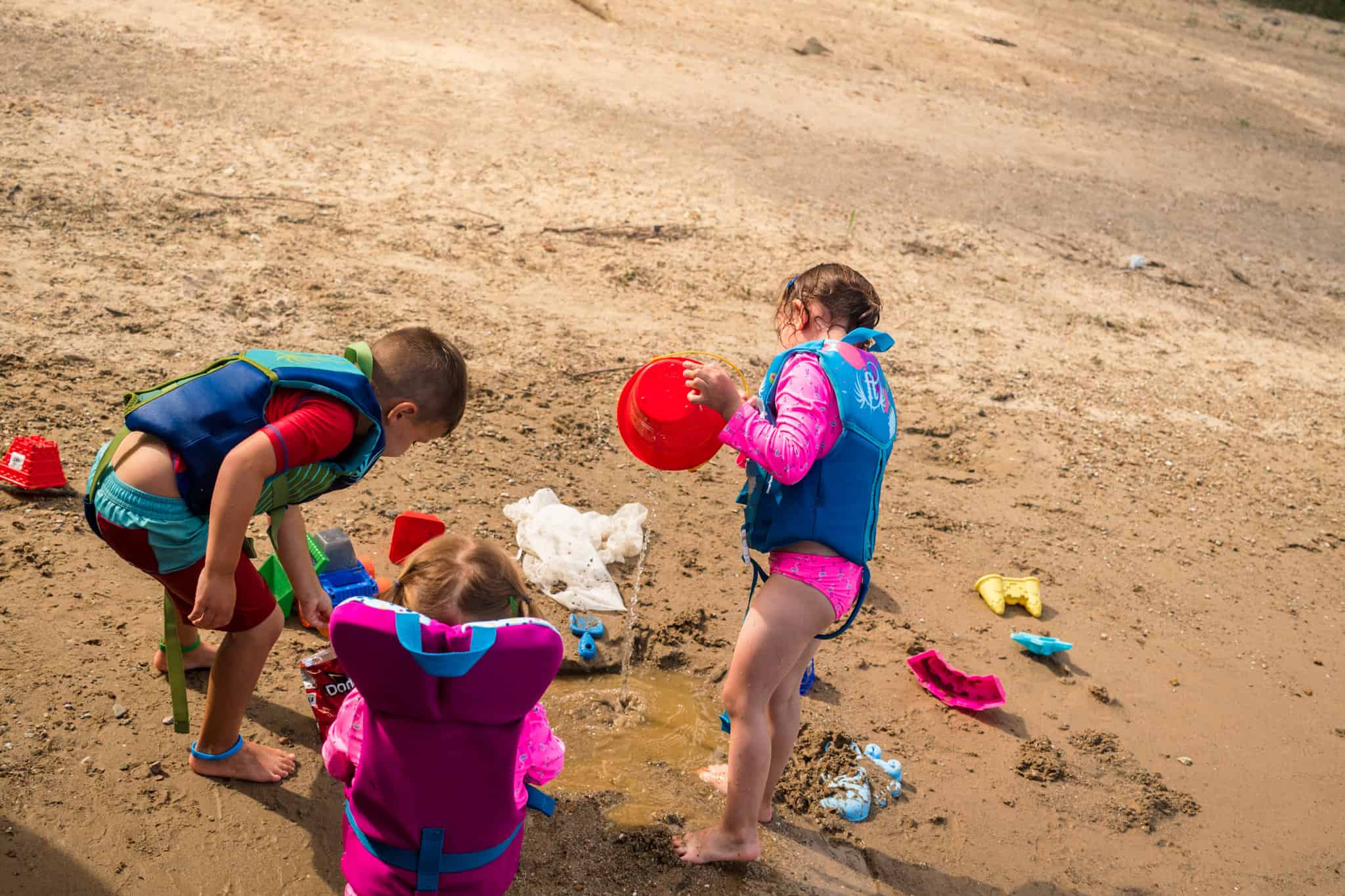
Life jacket sizing for kids
Life jackets for kids usually come in 3 different sizes, but that can vary by brand and purpose. Picking the right size life jacket for your kids is the most important factor when choosing a life jacket. Kids should fit properly in the life jacket they’re wearing at the moment. Do not buy a life jacket that your child will grow into. Buy one that fits their size and weight right now. Kids’ life jackets are sized according to weight, not chest size (adult life jackets are sized by chest circumference).
- Infant/Toddler: 8-30 lbs
- Child: 30-50 lbs
- Youth: 50-90 lbs
Proper life jacket fit for kids
A life jacket must fit properly in order for it to be safe and effective. It should have a secure, snug fit. If it’s too tight, it won’t provide sufficient flotation (you’ll need to move up a size). A fastened life jacket or vest should never rise above the face when a child is in the water. It’s important to make sure the adjustable straps are secure and the crotch strap is tight enough to prevent the life jacket from riding up. If the life jacket does rise up, it’s likely too large (go down a size).
Try the life jacket on before leaving the house
Before heading out to the pool or the lake, have your child try the life jacket on at home to make sure it fits properly and familiarize yourself with how to secure it. Most life jackets have a lot of different zippers and buckles. Many have leg straps, a crotch strap, and a snug-fit that kids need to get used to. It’s helpful to know how it goes on prior to getting on an unsteady boat or when your child is already slippery with sunscreen or sand.
When you’re doing the life jacket try on, get excited and talk it up to your kids! Some kids are not always excited about having to wear a life jacket, so any enthusiasm on your part will help make it a better experience. When trying it on beforehand, talk about how cool it is, and explaining the importance can help make your day in the water a little easier. Let your child move around in it for a little while so you can see how comfortable they are in it, and if any adjustments should be made to make them more comfortable.
It is important to make sure your child understands that the lifejacket HAS to be worn, and no exceptions will be made. Try to keep your tone light and excited about all the fun you’re going to have on your adventure! Modeling a life jacket yourself is a great way to help them get excited or at least feel ok with their new gear.
Best for life jackets for babies (0-30lbs)
When buying a life jacket for a baby, make sure there is good head support and a snug secure fit. Babies come in many different shapes, sizes and body types, and there are different life jackets to match. Babies may be uncomfortable in a life jacket at first, but a flexible and soft life jacket is key to it keeping them happy for long-term wearing. Don’t worry, they will get used to it, I promise! Here are our top picks for life jackets for babies and infants.
-
Best overall life jacket for babies – STEARNS Puddle Jumper Hydroprene Infant Life Jacket
- PROS: soft and comfortable hydroprene material, large head support, bright colors, USCG-approved, affordable, grab handle
- CONS: 3 buckles and a zipper that can make donning difficult, can be tight on chunkier babies
-
Best life jacket for chunky babies – O’Neill Wake Waterski USCG Infant Life Vest
- PROS: wider neck and arm openings, bright colors, adjustable around the waist, USCG-approved
- CONS: price, nylon material is not as soft or flexible as neoprene
Best overall life jacket for kids (swim/play/sports)
Ready for the best all-around life jackets for kids? This rapid dry life jacket can go from the pool to the lake on the same day (we’ve done it!). It is super comfortable and flexible, great for hours of swimming or playing. It’s also well-made and holds up over the years. We’ve had ours for 3 years now, and there are no tears or loose stitching. It’s very affordable for the quality!
-
Full Throttle Rapid Dry Neoprene Life Jacket (33-55lbs)
- PROS: comfortable/flexible material, rapid dry, neon colors available, USCG-approved, affordable, grab strap
-
Full Throttle Rapid Dry Youth Life Jacket (55-88lbs)
- PROS: comfortable/flexible material, rapid dry, neon colors available, USCG-approved, affordable, grab strap
Best 2-in-1 life jacket for kids that hate wearing life jackets (33 to 55 pounds)
Do you have a little escape artist? One of those kids that can wiggle out of any jacket or life jacket? My 4-year-old is notorious for this! However, we found a great solution. This two-in-one life jacket and rash guard combo will be a lifesaver (literally) for you and your kiddo. The back buckle and long sleeve rash guard make it impossible for the child to get off on their own. It’s a great toddler life jacket option as it’s also flexible and comfortable, so hopefully, after a while, they won’t be trying to take it off.
-
Puddle Jumper 2-in-1 Life Jacket and Rash-guard
- PROS: SPF 50 for arms and torso, back zipper, USCG- approved, many designs/styles
- CONS: no neon color options, price
Best life jackets for fashionable kids (33 to 55 pounds)
Do you have a child who loves colors, characters, fashion, or just needs some bribing to put the thing on? Well, then the Paddle Pals life jacket might be a good option for your child. There are tons of (20+) characters, colors, designs, and even 3-D options. The shoulder straps help keep the floaties nice and secure.
-
Body Glove Paddle Pals 33-55lbs
- PROS: shoulder straps and back buckle keep the arm and torso floaties secure, so many colors and characters, USCG-approved, affordable
- CONS: arm wings can limit arm motion
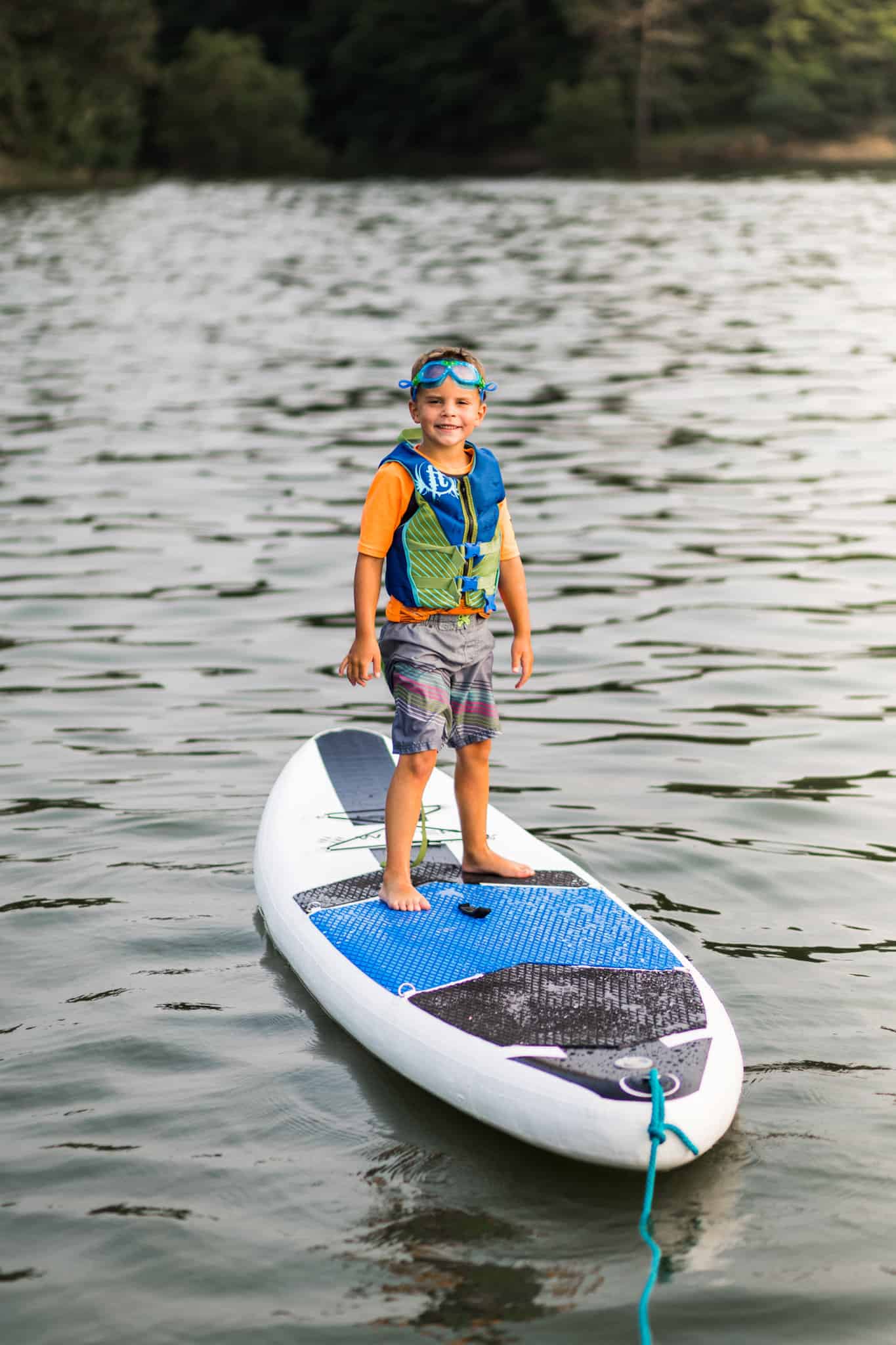
Best life jackets for kids participating in water sports
If your child is going to be tubing, skiing, or wakeboarding, you are going to want a life jacket that is flexible yet lightweight. If you are out on the water often enough for water sports, you will want to invest in a high-quality life jacket that is durable enough for spins and flips, and wipeouts!
-
O’Neill Child Reactor Life Vest 30-50lbs
- PROS: flexible, comfortable material, minimal bulk, USCG-approved
- CONS: price, no neon colors
-
O’Neill Youth Reactor Life Vest 50-90lbs
- PROS: flexible, comfortable material, neon colors, strap between legs for added safety, USCG-approved
- CONS: price
-
O’Neill Teen Reactor Life Vest 75-125lbs
- PROS: flexible, comfortable material, neon colors, minimal bulk, USCG-approved
- CONS: price
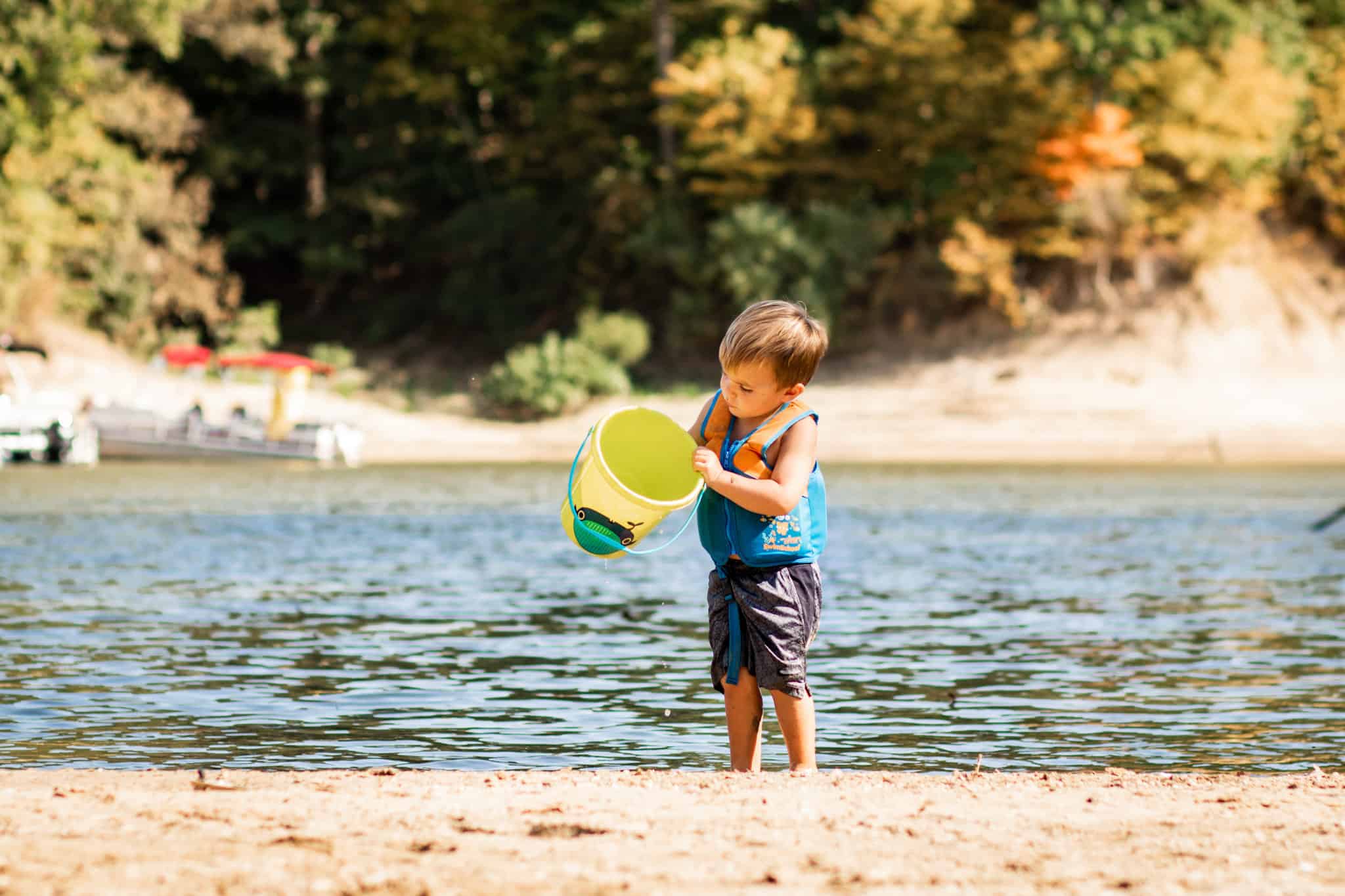
Best kids’ life jackets for swim training
If you have a young child (ages 2 to 4) that’s just learning how to swim, you may want something different than your traditional life jacket. A swim training vest is lightweight and less bulky than most life jackets, yet still buoyant. It can be used for training at the swimming pool when working on your swimming skills, or we use it for beach play. I have one child who is more interested in playing in the sand on the beach than getting in the water, so this swim vest works well for him because it allows him to play more comfortably but keeps him safe.
Please note that swim vests are NOT USCG-approved, so it’s best for pools or the beach and under high supervision. It’s designed to help kids swim in the prone (face-down) position, so it’s definitely not the right safety device if you’re out on open water.
-
Swim School Swim Trainer Vest (2-4 years or max 33lbs)
- PROS: easy to move in, flexible, easy on and off, neon colors available, very affordable
- CONS: not USCG-approved, less buoyant than traditional jackets
Best life jacket for kids when fishing
When fishing from the dock or boating to a waterfowl hunting spot, this life jacket will keep your child safe and fit in with the rest of the camouflaged gear! Plus, everyone loves pockets, right? This life vest has pockets for all your bobbers and fishing gear.
-
Airhead Sportsman Life Vest with Pockets youth 50-90lbs
- PROS: it’s got pockets, open sides for arm mobility, camouflage coloring, coast guard approved
- CONS: bulky, not great for swimming
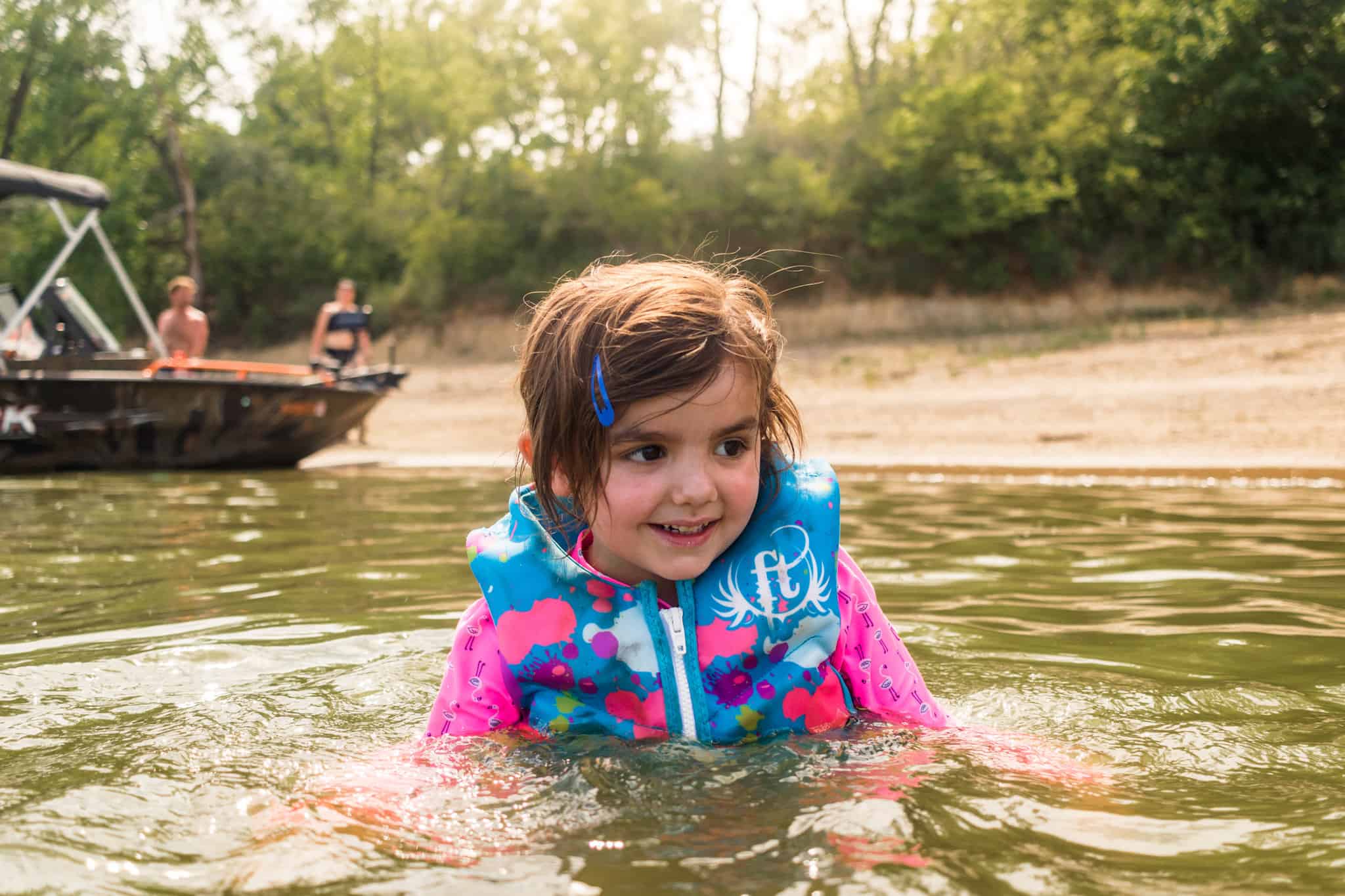
Comfort, safety, fun!
Nothing can spoil a beautiful summer day like a toddler meltdown due to an uncomfortable life jacket. We don’t want you to have that experience. We hope this post and these life jack recommendations help you be prepared with the most comfortable, most adorable, and safest life jacket for your water adventures. Wearing a life jacket may take some getting used to, but once you find the right one, everyone can have endless and safe fun! (And you can have a bit more peace of mind.)
Where will your kiddos wear their life jackets for some water fun?
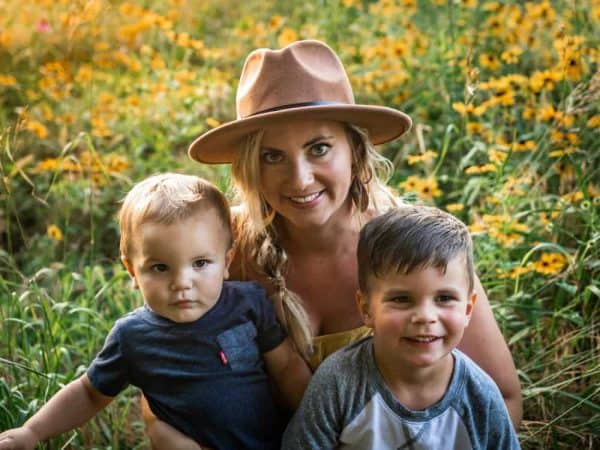
About the author
Meghan is a country-living mom of 3 kids in rural central Illinois. She is a Physical Therapist Assistant by trade but spends most of her time outside with her family. At home, she has large flower, herb, and vegetable gardens to tend to and 3 large dogs to play with. As a family, they enjoy hiking, camping, boating, fishing, and helping her in-laws show and raise livestock. Photography became a hobby while in isolation after her oldest son’s bone marrow transplant. It has since become a passion for capturing her family’s daily life. Throughout her family’s journey with rare disease and transplant, the outdoors have been a safe space for the whole family to grow, learn, and thrive.
You can find more from Meghan online in the following locations:
Instagram: @meghangarriott
Meghan’s RWMC posts: Meghan Garriott

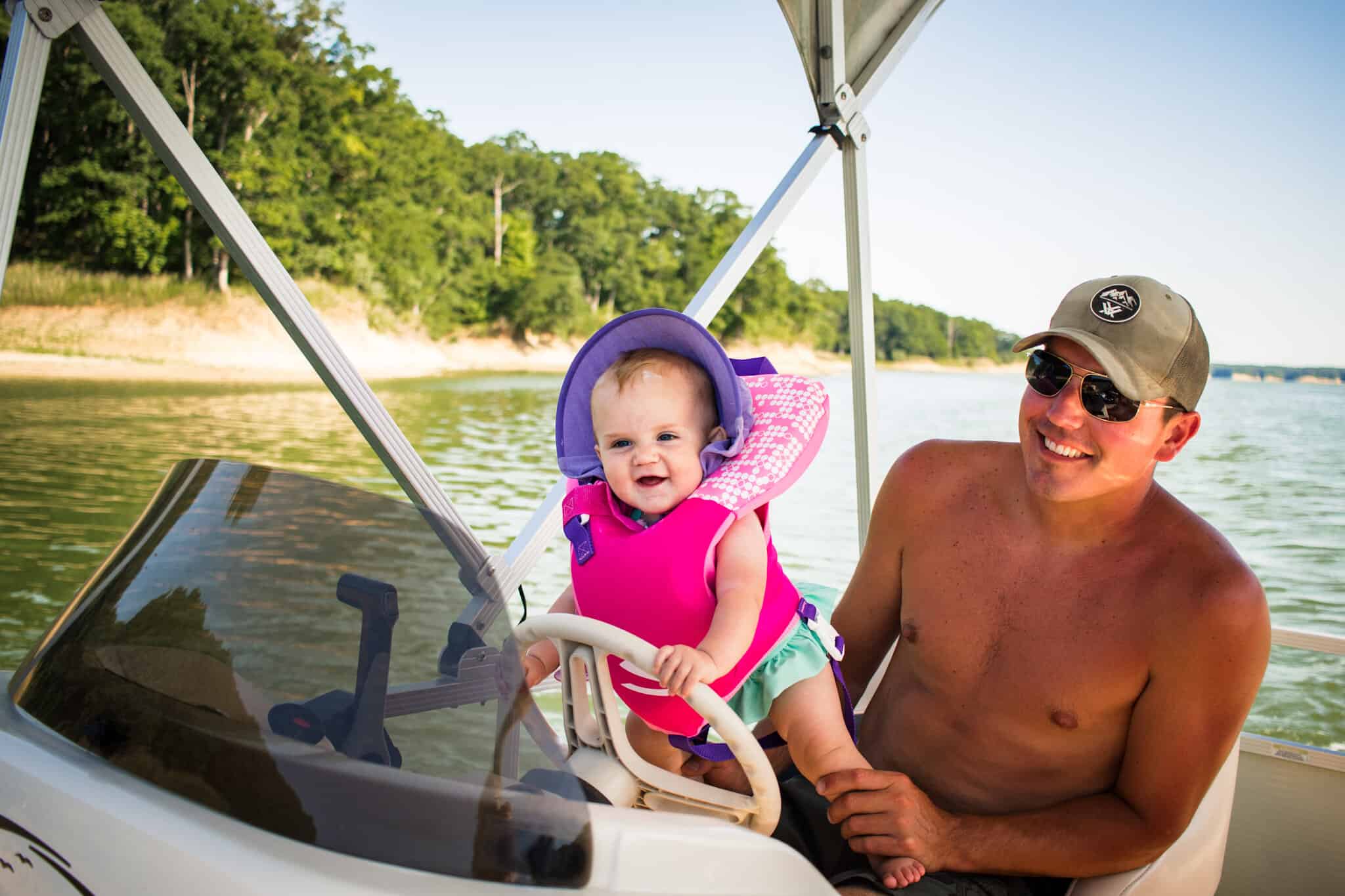
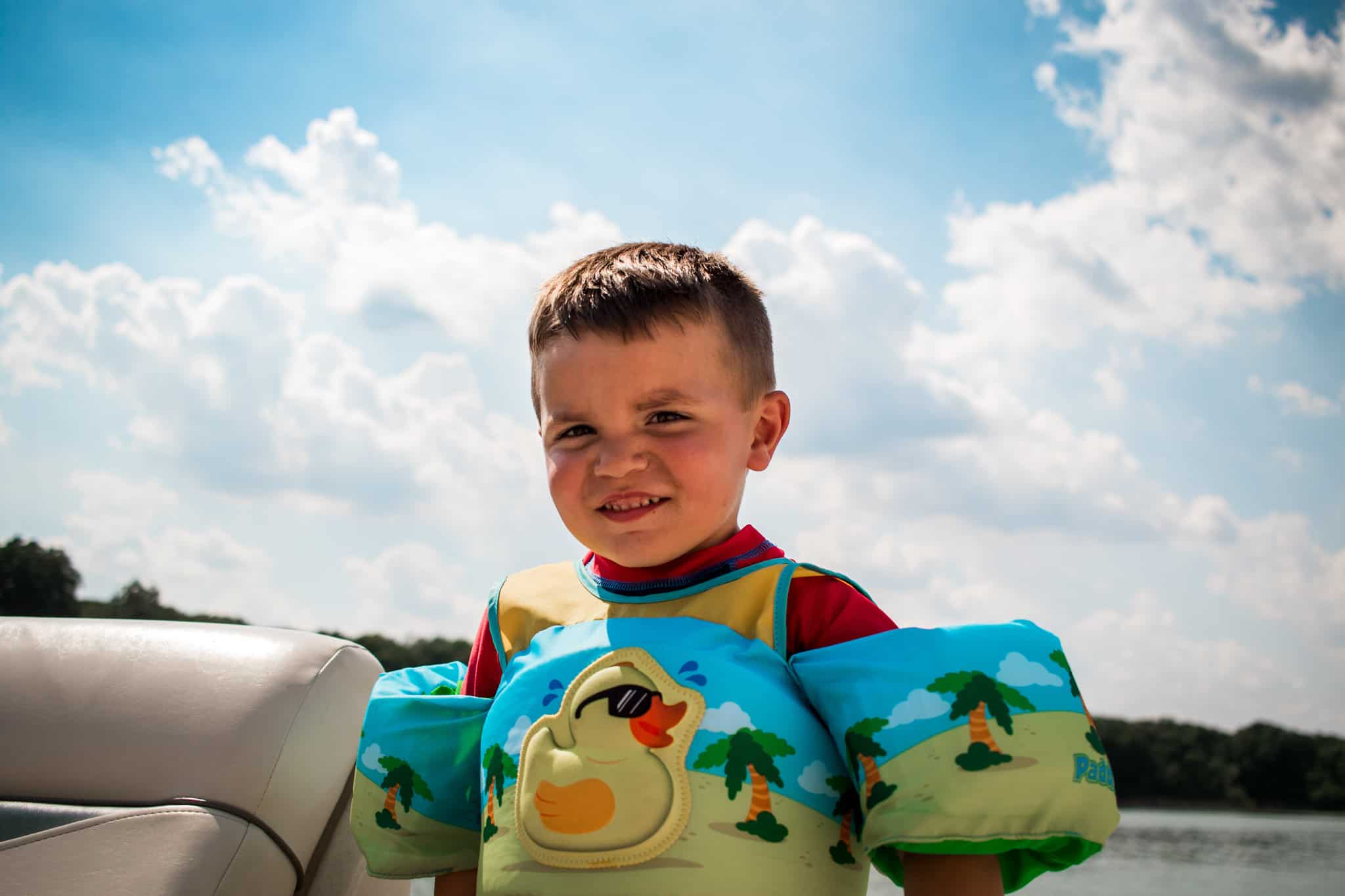







Hello guys, what model of life jacket would you suggest for a 10 year old kid that is very skinny, he is 4’10” and 85 pounds…thanks in advance…Eric